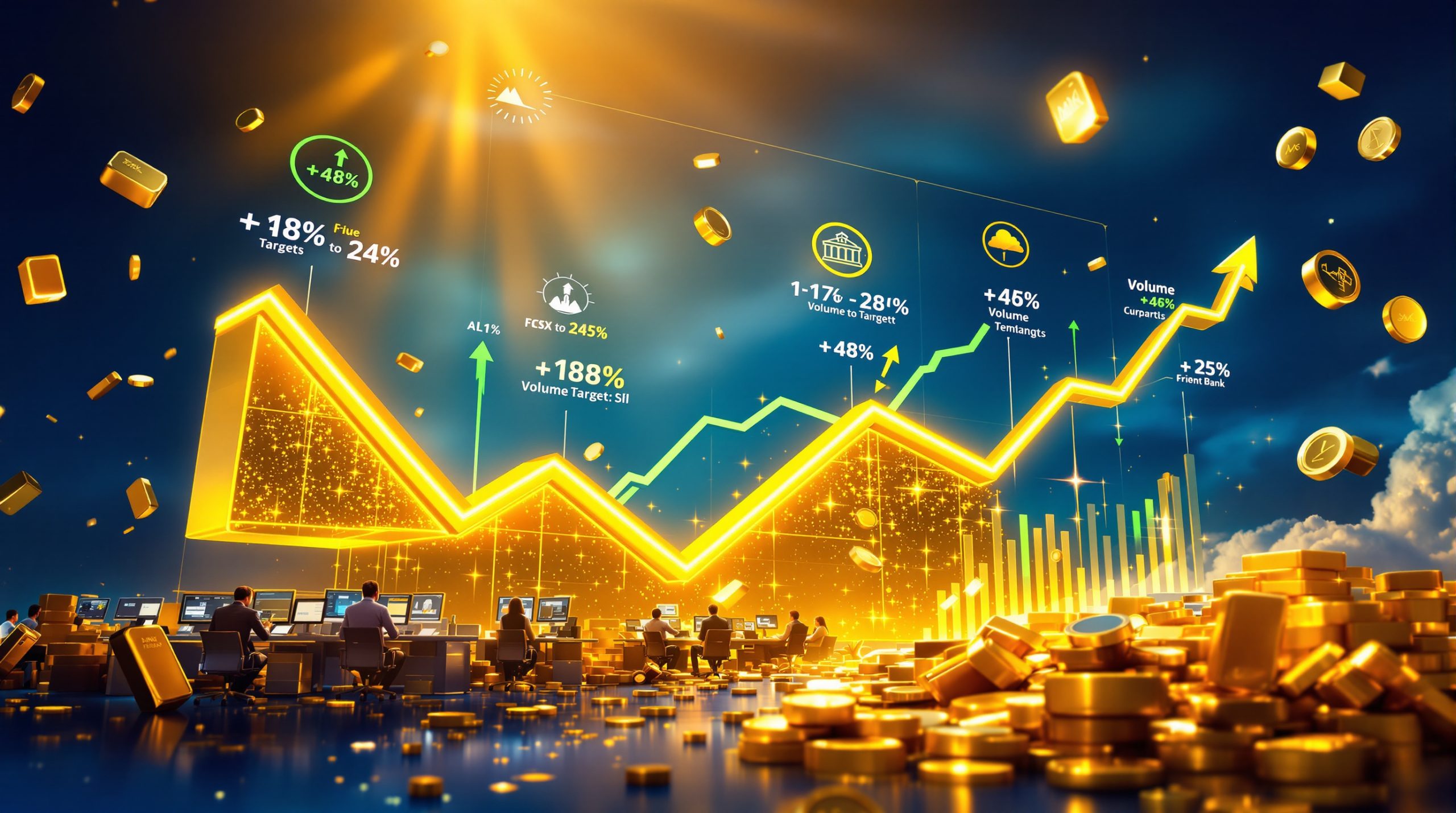The Lithium Industry Crisis: How EV Market Challenges Are Reshaping Mining Operations
The global lithium industry is experiencing unprecedented turbulence as electric vehicle adoption rates fall short of projections, creating a ripple effect throughout the mining sector. Once considered "white gold" for its critical role in the energy transition, lithium has seen its market fundamentals dramatically shift since 2022, forcing mining operations worldwide to adapt to a new reality of excess supply and diminished demand. Furthermore, understanding Argentinian lithium brine insights has become crucial for investors navigating this volatile market.
The Dramatic Market Collapse
Lithium prices have plummeted nearly 90% from their 2022 peak, creating one of the most significant supply gluts in the commodity's history. This collapse represents more than just a typical market correction—it signals a fundamental reassessment of the pace at which the world is transitioning to electric transportation.
According to industry data from Benchmark Mineral Intelligence, lithium carbonate prices in China have fallen from over $80,000 per tonne in November 2022 to approximately $13,000 per tonne in recent months. This precipitous decline has sent shockwaves through the entire lithium value chain, from major mining operations to exploration-stage projects.
"What we're witnessing isn't just a cyclical downturn but a structural realignment of supply and demand expectations," notes lithium market analyst James Blackwell. "The industry expanded capacity based on extremely optimistic EV adoption forecasts that simply haven't materialized."
Corporate Casualties Mount
The impact on Australian lithium producers has been particularly severe, with several major players announcing significant operational challenges:
- IGO Ltd. recently indicated potential asset impairments of up to $2.1 billion related to its Western Australian lithium operations
- Mineral Resources Ltd. suspended operations at its Wodgina mine, citing "unsustainable market conditions"
- Pilbara Minerals has implemented aggressive cost-cutting initiatives, reducing production at its Pilgangoora operation by approximately 30%
- Liontown Resources redirected material originally intended for Ford Motor Co. to Chinese buyers after Ford's EV sales declined 20% in Q2 2023
These developments highlight the vulnerability of even well-established producers to rapidly shifting market dynamics. The situation appears particularly dire for newer entrants with higher cost structures and limited financial reserves. Meanwhile, recent Australian lithium innovations are attempting to address some of these challenges through technological advancements.
Why Are Lithium Miners Struggling?
The current crisis stems from a complex interplay of market forces, technological developments, and regulatory changes that have collectively undermined previous growth assumptions.
EV Adoption Slowdown
The electric vehicle market has not expanded at the pace projected by most industry analysts in 2021-2022. Global EV sales growth has decelerated from 60% year-over-year in 2022 to approximately 35% in 2023, according to data from EV-Volumes.com. While still representing significant growth, this slowdown has had outsized impacts on raw material markets that had scaled up for much more aggressive adoption scenarios.
Key factors contributing to slower EV demand include:
- Persistent affordability gaps between EVs and internal combustion vehicles
- Consumer range anxiety and charging infrastructure limitations
- Economic uncertainty and rising interest rates limiting big-ticket purchases
- Growing competition from hybrid electric vehicles that require less lithium
The automotive industry itself appears to be recalibrating its electrification timelines. Ford Motor Company, which had previously invested heavily in EV development, reported a 20% decline in electric vehicle sales in Q2 2023 compared to the previous quarter, forcing a strategic reassessment of its electrification timeline.
Regulatory Uncertainty
Political factors have compounded market challenges, with changes in regulatory support creating additional headwinds for lithium demand. Notable examples include:
- Germany's unexpected decision to end EV subsidies in December 2023, three months earlier than planned
- China's reduction of subsidies for electric vehicles, though partially offset by other incentives
- Ongoing debates in the United States about the future of EV tax credits and qualifying battery components
- European Union delays in implementing stricter CO₂ emission standards for automakers
These regulatory shifts have created a more uncertain demand environment, making it difficult for lithium producers to accurately forecast future requirements and plan production accordingly. In this context, the Thacker Pass Mine update provides important insights into how North American production is responding to these challenges.
Unsustainable Price Environment
Current lithium prices have fallen below the incentive price needed to bring new production online, creating potential long-term supply constraints. According to Rio Tinto Group CEO Jakob Stausholm, present lithium prices are "clearly unsustainable" given the need to develop significant new supply to meet even conservative demand projections over the coming decade.
Industry analysis suggests the marginal cost of production for many lithium operations ranges between $15,000-$20,000 per tonne of lithium carbonate equivalent (LCE), meaning current market prices of approximately $13,000 per tonne are insufficient to justify new investments or maintain some existing operations.
"The lithium market is demonstrating classic boom-bust dynamics," explains mining economist Dr. Sarah Chen. "Prices surged to unsustainable highs, triggering massive supply responses that have now overshot more moderate demand growth. We're in the painful adjustment phase that will eventually lead to a more balanced market."
How Are Lithium Companies Responding?
Faced with existential challenges, lithium miners and ev struggles are prompting aggressive strategies to weather the downturn and position themselves for an eventual market recovery.
Financial Write-Downs and Impairments
The accounting reality of lower lithium prices is forcing many producers to reassess their asset values. These impairments reflect not just current market conditions but also revised expectations about medium-term price recovery:
- IGO Ltd. announced potential impairments of up to $2.1 billion on its lithium assets
- Albemarle Corporation recorded a $617 million impairment charge in Q1 2024
- Mineral Resources reduced the carrying value of its lithium inventory by $129 million
- Numerous exploration-stage companies have been forced to write down project valuations
These financial adjustments represent more than accounting exercises—they signal a fundamental repricing of lithium assets based on more conservative long-term price assumptions.
Operational Cost Controls
Miners are implementing comprehensive cost-cutting initiatives to preserve cash and improve competitiveness in the challenging price environment:
- Production curtailments: Several operations have reduced output by 20-40% to limit losses and avoid selling at prices below production costs
- Workforce reductions: Major producers have announced staff cuts of 5-15% across their lithium operations
- Capital expenditure deferrals: Expansion projects worth billions have been delayed or canceled entirely
- Operational efficiency improvements: Companies are intensifying efforts to reduce energy consumption, improve recovery rates, and optimize production processes
Pilbara Minerals has made cost control a particular focus, implementing what it calls "Project Sharpening"—a comprehensive efficiency program targeting a 15% reduction in unit production costs through process optimization and selective mining.
Supply Chain Realignments
The redirection of supply agreements has become increasingly common as original offtake partners struggle with their own market challenges:
- Liontown Resources redirected Ford-designated material to Chinese buyers after the automaker reduced its near-term lithium requirements
- Several Australian producers have renegotiated contracts to include more flexible pricing mechanisms and volume commitments
- Chinese converter facilities have become increasingly selective about accepting spodumene concentrate shipments, forcing miners to find alternative buyers
These supply chain disruptions highlight the interconnected nature of the EV battery ecosystem and the ripple effects that occur when any segment faces challenges. The development of a battery-grade lithium refinery in emerging markets like India represents an important diversification effort in this context.
What's Happening in the Chinese Lithium Market?
China remains the dominant force in global lithium markets, accounting for approximately 60% of processing capacity and 70% of battery production. Developments within the Chinese market therefore have outsized impacts on global dynamics.
Production Cut Speculation
Recent activity in Chinese lithium futures markets has shown increased speculation around potential production cuts, driving temporary price volatility:
- Futures prices on the Guangzhou Futures Exchange spiked 7% in a single day in March 2024 on rumors of coordinated production curtailments
- Major Chinese producers including Ganfeng Lithium and Tianqi Lithium have suggested they are "evaluating production adjustments" but have not announced specific reductions
- Satellite imagery analyzed by commodity intelligence firms has shown reduced activity at several Chinese lithium conversion facilities, though the extent remains unclear
While this speculation has driven short-term price fluctuations, concrete evidence of significant, sustained production curtailments remains limited. The fragmented nature of Chinese lithium production makes coordinated cuts challenging to implement and verify.
Market Influence Mechanisms
China's influence over global lithium markets extends beyond its role as the largest consumer and producer. Several unique mechanisms amplify its market impact:
- Strategic stockpiling: China's State Reserve Bureau has historically purchased lithium during price downturns for strategic reserves
- Production quotas: Provincial governments can implement production controls, particularly for operations with environmental compliance issues
- Import policies: Adjustments to import taxes and inspection requirements can significantly impact international trade flows
- Subsidy structures: Changes to EV subsidy programs directly influence domestic lithium demand
Market participants closely monitor these policy levers for indications of government intervention that could stabilize prices. Recent statements from China's Ministry of Industry and Information Technology have acknowledged the challenges facing the lithium sector but stopped short of announcing specific support measures.
What Does the Future Hold for Lithium Miners?
Despite current challenges, the fundamental long-term demand narrative for lithium remains intact, though with more measured expectations about the pace of growth.
Long-Term Demand Outlook
The transition to electric mobility and renewable energy storage will continue to drive lithium demand growth, though at a more moderate pace than previously forecast:
- Revised projections from industry consultancy Roskill suggest global lithium demand will grow from approximately 800,000 tonnes LCE in 2023 to 1.5-1.8 million tonnes by 2030
- Battery technology improvements are reducing lithium intensity per kWh, partially offsetting unit growth
- Energy storage systems for grid applications represent a growing demand segment, potentially accounting for 15-20% of lithium demand by 2030
- The development of lithium-ion battery recycling is creating a secondary supply source that may meet 8-10% of demand by the end of the decade
These revised projections still represent substantial growth but at a pace that allows more orderly market development than the frenzied expansion witnessed in 2021-2022.
Supply-Demand Rebalancing
Industry analysts anticipate a gradual rebalancing of the lithium market through several mechanisms:
- Production discipline: High-cost operations will continue to curtail or suspend production
- Project delays: Most greenfield developments have been pushed back by 2-4 years
- Demand acceleration: Lower battery prices enabled by cheaper lithium will eventually stimulate additional demand
- Industry consolidation: Financially stronger players will acquire distressed assets at reduced valuations
This rebalancing process is expected to take 12-24 months, with more stable market conditions potentially emerging in late 2025 or early 2026 according to consensus analyst forecasts.
Investment Implications
The current downturn presents both risks and opportunities for investors in the lithium sector:
- Companies with strong balance sheets and low-cost operations are better positioned to weather the current market conditions
- Assets with higher lithium grades and favorable mineralogy maintain competitive advantages
- Geographic diversification provides resilience against regional regulatory shifts
- Vertical integration into higher-value segments of the supply chain offers margin protection
"Smart money is beginning to look selectively at the sector," notes mining fund manager Michael Sullivan. "The best assets with strong management teams and robust balance sheets will not only survive this downturn but emerge stronger through opportunistic acquisitions and capacity rationalization."
How Are Major Mining Companies Viewing the Lithium Market?
Established diversified mining companies bring valuable perspective to lithium market conditions, given their experience with multiple commodity cycles and long-term investment horizons.
Rio Tinto's Perspective
Rio Tinto, which is developing the Jadar lithium project in Serbia and the Rincon lithium brine project in Argentina, has maintained its strategic commitment to lithium despite current market challenges:
"Current lithium prices are clearly unsustainable if we want to incentivize the development of new supply to meet projected demand growth in the coming decade," stated CEO Jakob Stausholm in a recent earnings call. "We're taking a long-term view and advancing our projects at a measured pace that aligns with our expectations for market recovery."
The company has indicated it believes lithium prices will need to stabilize in the $20,000-25,000 per tonne range to justify the significant capital investments required to bring new supply online.
Industry Consensus
There appears to be broad agreement among major mining companies about several key market dynamics:
- The current price environment is insufficient to support necessary capacity expansion
- Supply rationalization is necessary and inevitable given current market conditions
- The long-term fundamentals for lithium demand remain positive
- The energy transition timeline may be extending, but its direction is unchanged
- Regional supply chains will continue to develop, creating differential value for projects based on their location
This consensus view emphasizes patience and financial discipline while maintaining strategic positions in what remains a critical future-facing commodity.
What Are the Broader Implications for the EV Supply Chain?
The lithium market downturn is creating ripple effects throughout the electric vehicle supply chain, forcing adjustments across multiple industries.
Automotive Industry Adjustments
EV manufacturers are reassessing their electrification strategies in response to changing market conditions:
- Ford has shifted toward hybrid vehicles while slowing its EV capacity expansion
- General Motors delayed its electric pickup truck production ramp-up by approximately one year
- Volkswagen revised its 2030 EV sales targets from 80% to 50-60% of total vehicle sales
- Tesla introduced lower-priced models leveraging reduced battery material costs
These adjustments represent tactical responses to current market conditions rather than strategic abandonment of electrification. Most automakers continue to invest heavily in electric platforms while extending their transition timelines.
Battery Technology Evolution
The lithium market downturn may accelerate innovation in battery technologies, potentially reshaping future demand patterns:
- Increased research into sodium-ion batteries as partial lithium substitutes for certain applications
- Accelerated development of solid-state batteries that could reduce lithium requirements by up to 30%
- Greater emphasis on lithium iron phosphate (LFP) chemistries that use less lithium than nickel-manganese-cobalt (NMC) alternatives
- Advanced battery management systems that extend useful life, reducing replacement frequency
These technological adaptations could moderate long-term lithium demand growth even as EV adoption continues, creating a more sustainable balance between supply and demand. Additionally, geothermal lithium extraction methods are showing promise as potentially more sustainable alternatives to conventional mining.
Regional Supply Chain Development
Geopolitical considerations continue to influence the development of regional battery supply chains:
- The U.S. Inflation Reduction Act has accelerated North American supply chain development
- European battery manufacturers are prioritizing locally-sourced materials
- Japanese and Korean battery makers are diversifying supply sources beyond China
- Australian miners are seeking closer integration with non-Chinese processing facilities
This regionalization creates both challenges and opportunities for lithium producers based on their geographic positioning and strategic relationships.
The Geological Reality Behind the Lithium Crisis
Understanding the geological constraints of lithium production provides important context for the current market challenges and future supply potential.
Grade and Mineral Type Disparities
Not all lithium deposits are created equal, with significant variations in economic viability:
| Deposit Type | Typical Grade | Processing Complexity | Cost Position | Examples |
|---|---|---|---|---|
| Hard Rock (Spodumene) | 1.2-1.8% Li₂O | Moderate | Mid-tier | Greenbushes (Australia), Pilgangoora (Australia) |
| Brine | 200-1,600 mg/L | High | Low-tier (mature) | Atacama (Chile), Uyuni (Bolivia) |
| Clay | 0.1-0.4% Li | Very High | High-tier | Thacker Pass (USA), Sonora (Mexico) |
| Geothermal | 100-400 mg/L | Experimental | Unknown | Salton Sea (USA), Upper Rhine Valley (Germany) |
This diversity in resource quality creates a wide range of production costs and explains why some operations remain profitable even at current prices while others have been forced to suspend production.
Environmental Considerations
Lithium extraction faces increasing environmental scrutiny, particularly regarding water usage and habitat impacts:
- Water consumption: Brine operations in South America's "Lithium Triangle" face growing opposition from indigenous communities concerned about aquifer depletion
- Land disturbance: Hard rock mining operations require significant surface disruption
- Processing emissions: Converting lithium into battery-grade materials involves energy-intensive processes
- Regulatory hurdles: Environmental permitting timelines are extending, delaying
Are You Ready to Capitalise on Lithium Market Shifts?
Discover how real-time insights from Discovery Alert can transform your investment strategy amidst the evolving lithium market dynamics. Visit the Discoveries page to explore historic returns and start your 30-day free trial with the Discovery IQ model for a leading market advantage.




